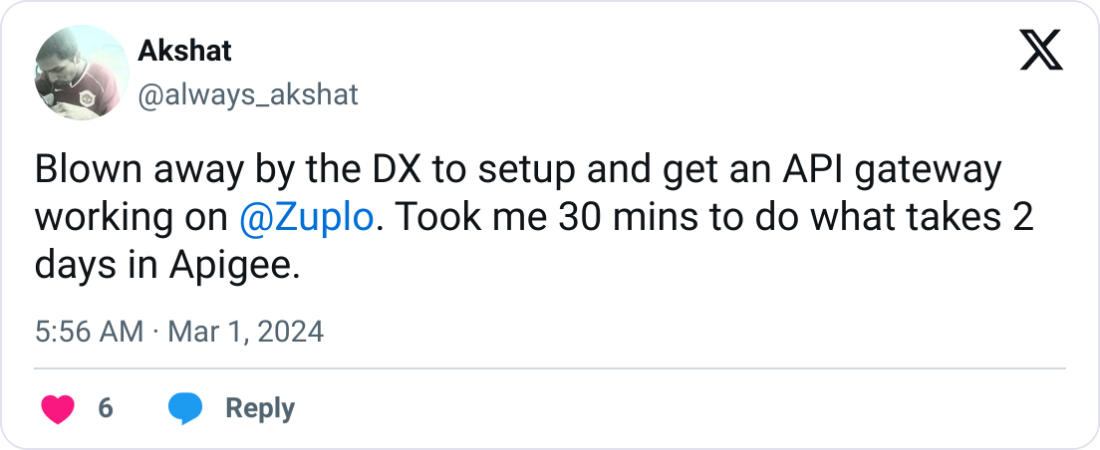APIs have evolved from backend infrastructure to powerful money-makers, as companies increasingly adopt API monetization as a revenue-generating strategy. Organizations everywhere are racing to implement effective API monetization approaches that can transform technical assets into sustainable business value.
More importantly, smart companies now know better than to slap the same price tag on every customer and hope for the best. Instead, they segment their users based on usage patterns, industry, and specific needs, creating pricing tiers that resonate with each group. Let's explore how you can transform your APIs from cost centers into profit powerhouses through customer-centric pricing strategies.
- Unlocking the API Value Chain for Maximum Profit
- Smart Segmentation: The Foundation of API Pricing Success
- Advanced Segmentation: Taking API Monetization to the Next Level
- Personalized Pricing That Drives API Revenue
- Building the Technical Foundation for Dynamic Pricing
- Data-Driven Decision Making for Pricing Optimization
- Ethical Pricing: Building Trust While Maximizing Revenue
- Implementing Your API Monetization Transformation
- The Future of API Monetization Is Personalized
- The Strategic Advantage of Smart API Pricing
Unlocking the API Value Chain for Maximum Profit#
Understanding your API's value creation points is the first step toward strategic monetization. Your API isn't just a technical utility—it's a value delivery system with multiple touchpoints that different customer segments appreciate differently.
Key Business Metrics That Matter#
Tracking API calls alone is for amateurs. The real pros use API analytics best practices to monitor these key metrics to optimize API monetization with customer segmentation and personalized pricing:
- Customer Lifetime Value (CLV): Predicting the total value a customer will generate helps identify which segments deserve premium treatment and investment.
- API-specific retention rates: Not all endpoints deliver equal value. Tracking which segments use which endpoints over time reveals which parts of your API should command premium pricing. Monitoring key metrics for managing RBAC analytics can provide insights into user permissions and access patterns that affect retention.
- Revenue per API call by segment: Breaking down what different segments pay per call unlocks value-based pricing opportunities that basic models miss.
- Feature adoption rate: Calculate this as (Number of users adopting a feature / Total number of users) × 100 to reveal which capabilities drive the most value for different segments.
- Time to first API call: This metric shows how quickly customers start deriving value—a critical indicator for pricing model design.
Understanding Value Perception Across Stakeholders#
Different players see API value through entirely different lenses.
- Developers (API consumers): They care about technical functionality and ease of integration. Utilizing API usage analytics and value-based segmentation helps distinguish between hobbyist hackers and developers building business-critical applications.
- Businesses (budget holders): They need ROI, efficiency gains, and competitive advantage. This is why providers like Stripe segment offerings based on business size and industry needs.
- End-users: Though they experience your API's value indirectly, their experience influences how much your direct customers value your offering.
Smart Segmentation: The Foundation of API Pricing Success#

Your API isn't a one-size-fits-all product, so why use one-size-fits-all pricing? Customer segmentation allows you to target specific needs, optimize marketing by implementing strategies for API marketing, and create pricing tiers that resonate with different user types.
Powerful Methods for Identifying Customer Segments
Group your API customers the right way with these approaches:
- Usage-based segmentation: Analyze call volume, frequency, endpoint preferences, and integration complexity to identify natural usage patterns that reveal value perception.
- Industry/vertical-based segmentation: Healthcare customers need HIPAA compliance, while fintech requires PCI DSS standards—different industries have unique requirements and compliance needs. Applying industry-specific strategies can help you cater to the needs of financial services customers.
- Maturity-based segmentation: Startups need flexible pricing and quick implementation, while enterprises demand rock-solid SLAs and compliance guarantees.
- Value extraction segmentation: How customers monetize your API directly impacts what they'll pay, whether they're using it for cost savings or revenue generation.
Essential Data Collection for Effective Segmentation#
You can't segment effectively without the right data. Here are the metrics to keep an eye on:
- Behavioral analytics: Track API call patterns, endpoint preferences, time-of-day usage, and error rates to identify natural user segments.
- CRM integration: Connect API usage data with customer profiles for a complete picture of who's using your service and how.
- Qualitative insights: Gather user interviews, support ticket analysis, and sales call notes to understand the "why" behind the numbers.
- Technical profiling: Identify programming languages used, integration methods, and platform preferences to better understand your users' needs.
Advanced Segmentation: Taking API Monetization to the Next Level#
Basic segmentation is just the beginning. To maximize API revenue, implement these sophisticated techniques that reveal hidden patterns and predict future behavior.
Cohort Analysis Reveals Evolving Usage Patterns#
Unlike standard segmentation that provides a static snapshot, cohort analysis shows how behavior evolves over time:
- Define meaningful cohorts (like customers who signed up in January vs. March)
- Track key metrics for each cohort over time (How do their API calls evolve?)
- Compare cohorts to identify trends (Are newer customers adopting features faster?)
This approach might reveal that customers who start with authentication endpoints typically upgrade within three months—valuable intelligence for your pricing strategy.
Predictive Segmentation: Your API Pricing Crystal Ball#
Traditional segmentation looks backward; predictive segmentation uses machine learning to spot patterns that indicate future potential:
- Identify high-potential customers before they scale
- Predict usage patterns to make proactive pricing offers
- Spot churn risks and intervene before customers leave
- Optimize resources based on predicted demand
Your ML models can analyze dozens of variables simultaneously to predict which free-tier users will become enterprise customers or which customers might benefit from a different pricing structure.
Multi-dimensional Frameworks for Hyper-Specific Segments#
For API businesses, effective multi-dimensional frameworks often include:
- Usage dimensions (volume, frequency, peak times)
- Technical dimensions (integration methods, languages used)
- Business dimensions (industry, company size, growth rate)
- Value dimensions (revenue generated, strategic importance)
By combining these dimensions, you can identify hyper-specific segments like "high-growth fintech startups using Python with increasing weekend API traffic" and tailor your offerings accordingly.

Over 10,000 developers trust Zuplo to secure, document, and monetize their APIs
Learn MoreTracking Customer Migration Between Segments#
Understanding how customers move between segments over time provides a roadmap to upsell opportunities and churn risks:
- Establish clear definitions for each segment
- Record segment changes at regular intervals
- Analyze common migration paths and triggers
- Create targeted interventions for desirable transitions
Personalized Pricing That Drives API Revenue#
Generic pricing tiers are obsolete. Today's winning API businesses use personalized pricing strategies that feel tailor-made for each customer segment while maximizing revenue potential.
Usage-based Approaches That Customers Love#
Dynamic pricing based on usage patterns - Implement volume discounts that activate automatically when customers exceed certain thresholds, encouraging increased API adoption.
Endpoint-specific pricing - Price high-value endpoints (like payment processing) at premium rates while offering simpler endpoints (like status checks) at lower rates or free, aligning pricing with actual value.
Time-based adjustments - Implement peak vs. off-peak pricing to smooth out usage and better align with infrastructure costs, offering discounts during slow periods.
Value-based Models for Different Segments#
Outcome-based pricing - Tie pricing to business outcomes rather than request volume. For example, when monetizing AI capabilities through APIs, a recommendation API might charge based on conversion lift rather than request count, creating perfect alignment between your revenue and customer success.
Customized feature bundles - Create segment-specific packages addressing each group's unique requirements. Enterprise customers might prioritize compliance while startups focus on flexibility.
Progressive value delivery - Structure pricing to evolve as customers mature, starting with simplified options for new users and introducing more sophisticated pricing as they grow.
AWS: The Personalized Pricing Master#
Amazon Web Services (AWS) offers a masterclass in personalized API pricing with their multi-faceted approach:
Granular, pay-as-you-go pricing - Zuplo charges for API Gateway based on calls received and data transferred ensuring users only pay for what they use.
Free tier for exploration - Their free tier includes one million API calls per month for 12 months, eliminating adoption barriers while creating a clear path to paid usage.
Volume-based discounts and reserved capacity - AWS automatically applies tiered discounts as usage scales and offers reserved capacity pricing with significant savings for predictable usage.
According to research by Simon-Kucher & Partners, this flexible approach allows AWS to capture more value from enterprise customers while remaining accessible to smaller users—contributing significantly to their market dominance.
Building the Technical Foundation for Dynamic Pricing#

Creating a flexible pricing infrastructure requires thoughtful technical design. Here's how to build systems that implement and test personalized pricing effectively.
Technical Infrastructure That Powers Personalized Pricing#
To support truly dynamic API pricing, you'll need several key components:
Real-time pricing engine#
This system calculates prices based on customer attributes, usage patterns, and business rules in real-time without performance degradation.
Usage metering and analytics#
Implement time-series databases (like InfluxDB) and stream processing engines (Apache Kafka) for real-time usage tracking and analysis. Utilizing essential API monitoring tools can enhance your ability to detect issues and optimize performance.
Flexible billing system#
Your billing system must support multiple pricing structures simultaneously, including volume-based discounts and subscription-plus-overage models.
As Google Cloud demonstrates with their "Intelligent Pricing" approach, machine learning can effectively adjust prices based on usage commitments and other factors—but the logic still needs to be explainable to customers.
Testing Frameworks for Pricing Experiments
You wouldn't deploy untested code, so don't deploy untested pricing either.
Segment-based testing#
Create parallel pricing structures for different customer segments with clear test and control groups to measure impact.
Phased rollouts#
Introduce new pricing models gradually, starting with a small percentage of new customers before wider deployment.
Multi-armed bandit testing#
Use algorithms that automatically allocate more traffic to better-performing pricing variants, learning faster than traditional A/B testing.
When designing pricing experiments, look beyond immediate revenue to longer-term metrics like customer lifetime value. Different segments have wildly different price elasticity, which is why personalized pricing is so powerful when implemented correctly.
Data-Driven Decision Making for Pricing Optimization#
Making informed pricing decisions requires a comprehensive understanding of how customers use your service and how different pricing models affect business outcomes.
Essential Metrics for Pricing Intelligence#
To optimize API pricing effectively, track these key metrics:
- API Call Volume - Monitor daily, weekly, and monthly call volumes by segment to identify usage patterns and upsell opportunities.
- Average Revenue Per User (ARPU) - Calculate total revenue divided by number of users, breaking it down by segment to identify your most valuable customer groups.
- Customer Lifetime Value (CLV) - Track (Average Purchase Value × Average Purchase Frequency) × Average Customer Lifespan to identify where to focus pricing optimization efforts.
- Churn Rate - A spike in churn after a pricing change is a clear warning sign that you've missed the mark with a particular segment.
- Feature Adoption Rate - Calculate the percentage of users adopting specific API features to understand which capabilities drive the most value.
- Conversion and Upsell Rates - Track how effectively you're moving customers between pricing tiers to gauge the health of your pricing ladder.
Analytics Tools for API Businesses#
To collect and analyze pricing data effectively, consider these options:
Specialized API Analytics Platforms:
- Moesif: Offers dedicated API analytics with user segmentation and revenue metrics
- Streamdata.io: Focuses on real-time API monitoring with specialized performance metrics
- Zuplo Gateway Analytics: Zuplo provides usage analytics for both API developers, as well as personalized-metrics for API consumers (ex. Quota usage, error rates, etc.).
General Analytics Tools:
- Mixpanel/Amplitude: Event-based analytics platforms configurable for API usage tracking
- Google Analytics: Can be adapted for API analytics with custom event tracking
- Custom Solutions: Built with tools like Grafana and Elasticsearch for maximum flexibility
For most API businesses, the ideal approach combines specialized API analytics tools for deep usage insights with broader business analytics to connect pricing decisions to overall performance.
Ethical Pricing: Building Trust While Maximizing Revenue#
When implementing differentiated API pricing, navigate ethical and legal considerations carefully to ensure your approach is both fair and compliant.
Price Discrimination vs. Price Personalization#
There's a crucial distinction between price discrimination (problematic) and price personalization (legitimate):
- Make sure price differences connect to value differences
- Avoid pricing based solely on willingness-to-pay estimates
- Document your pricing rationale thoroughly
Transparency Builds Customer Trust#
Transparency isn't optional—it's essential for building trust:
- Clearly communicate what factors influence pricing decisions
- Provide detailed usage reports that connect directly to your pricing model
- Make your pricing structure publicly available
Remember, confused customers become suspicious customers, and suspicious customers leave.
Avoiding Algorithmic Bias#
If using algorithms for pricing decisions, be vigilant about potential biases:
- Regularly audit your pricing algorithms for unintended discriminatory outcomes
- Test your pricing models across different customer segments to ensure fairness
- Consider establishing an ethics committee to review pricing strategies
Building Long-Term Customer Relationships#
While maximizing revenue matters, building customer trust should be your north star:
- Use clear terms of service that explicitly outline pricing structures
- Give customers control over their data used for pricing decisions
- Consider implementing price protection for existing customers when introducing new tiers
The most successful API providers view ethical pricing not as a constraint but as a competitive advantage that builds trust and loyalty.
Implementing Your API Monetization Transformation#
Ready to transform your API from a cost center to a profit machine? Here's your step-by-step roadmap to success.
Your Step-by-Step Transition Guide#
- Audit Current Pricing Structure - Assess what's working and what's falling flat in your existing model.
- Define Segmentation Criteria - Determine which customer attributes will drive your segmentation strategy.
- Collect and Analyze Customer Data - Gather comprehensive usage information to identify natural segmentation points.
- Design Tiered Pricing Models - Create flexible pricing models for each segment aligned with their specific value perception.
- Develop Communication Strategy - Craft messaging that explains the benefits of your new pricing structure.
- Pilot with Select Customers - Test your new pricing with a small group from each segment before full deployment.
- Implement Gradual Rollout - Consider introducing new pricing to new customers first, then offer existing customers transition options.
- Monitor and Optimize - Continuously track key metrics and make necessary adjustments.
Technical Requirements Checklist#
To implement personalized API pricing effectively, you'll need:
- Usage Tracking and Metering System
- Data Analytics Platform
- Flexible Billing System
- Customer Portal Enhancements
- API Gateway Configuration
- Database Optimization
- Integration Framework
Managing Implementation Risks#
When implementing personalized API pricing, address these potential risks:
- Customer Resistance: Offer grandfathering or price matching for loyal customers, as DigitalOcean does with price protection for existing customers.
- Technical Implementation Challenges: Conduct thorough load testing and implement changes in phases to identify bottlenecks early.
- Revenue Fluctuations: Model different scenarios during planning and maintain financial buffers for the transition period.
- Data Privacy Concerns: Implement clear data collection policies and give users control over their data.
The Future of API Monetization Is Personalized#
As the API economy evolves, several emerging trends are reshaping monetization strategies. Stay ahead of the curve with these innovations.
AI-driven Hyper-personalization#
AI is revolutionizing API pricing by enabling truly personalized models that analyze individual usage patterns, integration complexity, and value derived:
- Continuously analyze customer usage patterns for real-time pricing optimization
- Predict future API consumption needs and proactively offer appropriate pricing
- Identify customer-specific value drivers to align pricing with actual value received
- Adjust pricing dynamically based on changing usage patterns
Emerging Monetization Models#
Several innovative approaches are gaining traction:
- Blockchain-based Transparent Pricing: Smart contracts automatically execute pricing agreements when predefined conditions are met, providing complete auditability.
- Collaborative Ecosystem Pricing: Multiple API providers work together to offer customers access to complementary APIs through unified pricing structures.
- Consumption-Prediction Models: Advanced analytics predict future usage patterns and offer proactive pricing recommendations based on historical data and growth trends.
- Outcome-Based Pricing: Moving from charging for API calls to charging for business results—like an e-commerce recommendation API charging based on conversion lift rather than request volume.
These approaches signal a fundamental shift toward sophisticated models that align costs with actual value delivered, creating more sustainable relationships in the API economy.
The Strategic Advantage of Smart API Pricing#
The most successful API businesses understand that pricing isn't a set-it-and-forget-it decision—it's an ongoing process of refinement. Companies like Stripe and Twilio have demonstrated that aligning pricing with value delivery and usage patterns leads to stronger customer relationships and improved revenue.
The organizations that dominate the API economy aren't just those with the best technology—they're the ones that view pricing as a strategic advantage. By implementing the segmentation and personalization strategies we've discussed, you'll capture the full value of your API offerings while building lasting customer relationships.
Ready to transform your API from a cost center into a powerful revenue engine? Zuplo provides the tools you need to implement sophisticated monetization strategies with ease. From developer-friendly interfaces to flexible pricing controls, to built-in Stripe integration, our platform helps you unlock the full potential of your APIs. Sign up for a free Zuplo account today and start your journey toward API monetization success.